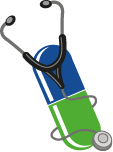What are the key messages and how they will be used?
To support communication activities at national level, ECDC has produced several communication toolkits containing template materials and evidence-based key messages which may be adapted for use at national level.
Download

What is EAAD?
European Antibiotic Awareness Day (EAAD) is a European health initiative coordinated by ECDC, which aims to provide a platform and support for national campaigns on the prudent use of antibiotics. Each year across Europe, EAAD is marked by national campaigns on the prudent use of antibiotics on or around 18 November.
What are the key messages and how they will be used?
To support communication activities at national level, ECDC has produced several communication toolkits containing template materials and evidence-based key messages which may be adapted for use at national level.
Key messages are the cornerstone of any communication campaign. The key messages for the new toolkit:
- Aim at creating a sense of individual responsibility in tackling antibiotic resistance and at empowering professionals to take action.
- Provide a set of water-tight statements, each of which is accompanied by a reference, that should be used as a basis for the content of the template materials;
- Cover a number of professionals working at hospitals and other healthcare settings: managers/administrators, infectious disease specialists, infection prevention and control professionals, epidemiologists, prescribers, junior doctors and students, pharmacists, nurses, clinical microbiologists, and professionals in emergency departments, in intensive care units, and in long-term care facilities.
The issues surrounding antibiotic resistance may differ in each EU/EEA country. It is important to stress that the template materials developed by ECDC provide core information and common messages, but will be most effective if adapted to respond to the needs and situations in each country, and even each hospital or healthcare setting. Countries could consider leveraging the national antibiotic resistance and antibiotic consumption data available from EARS-Net and ESAC-Net respectively, and consulting with national professional associations on the most appropriate tools to be used in their country.
What is “expert consensus”?
When, in this document, a reference to a message is indicated as “expert consensus”, ECDC is referring to the agreement reached in the outlined decision-making process, including ECDC experts’ internal agreement, EAAD TAC members’ opinion, and consultation with external experts and stakeholders.

